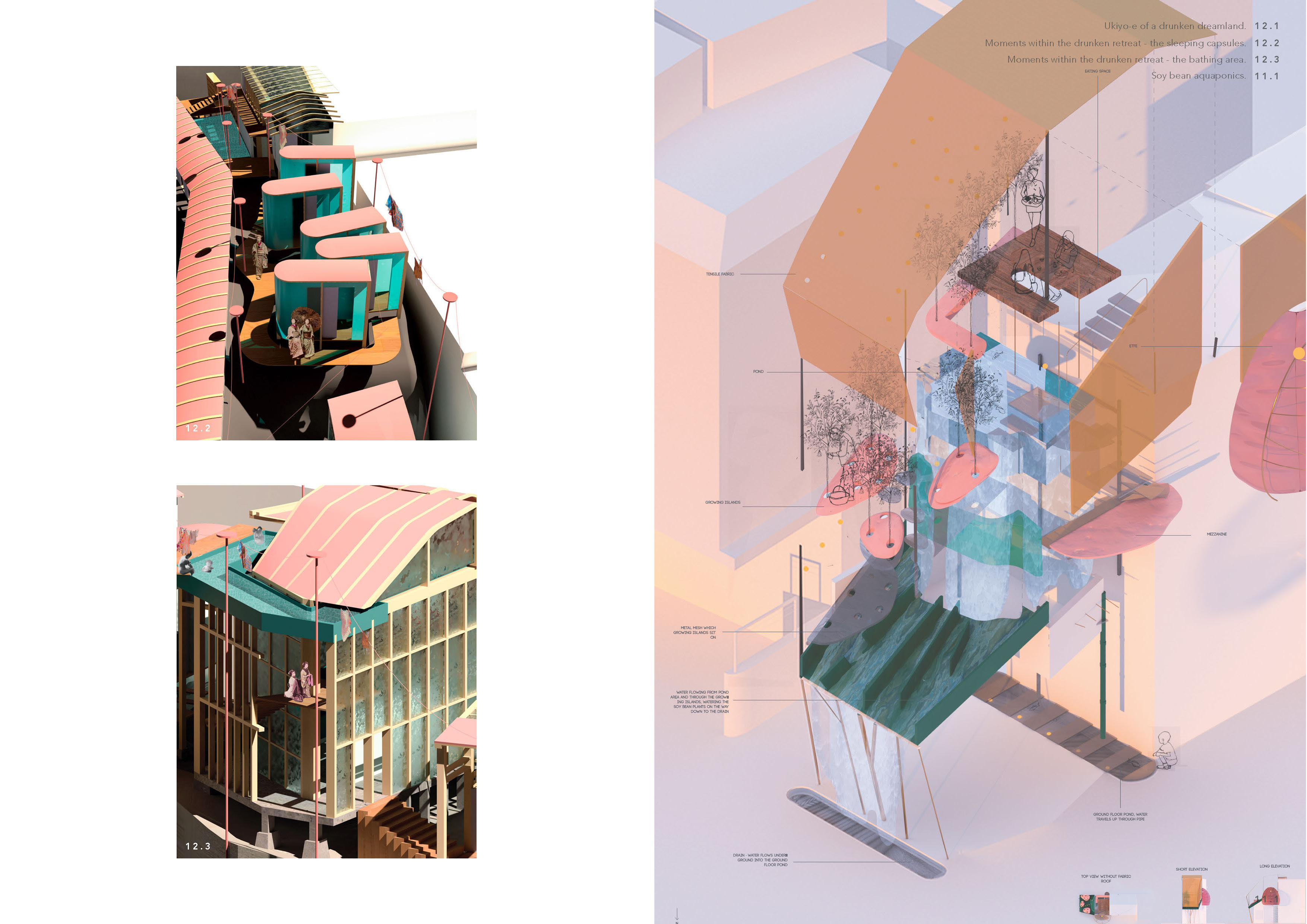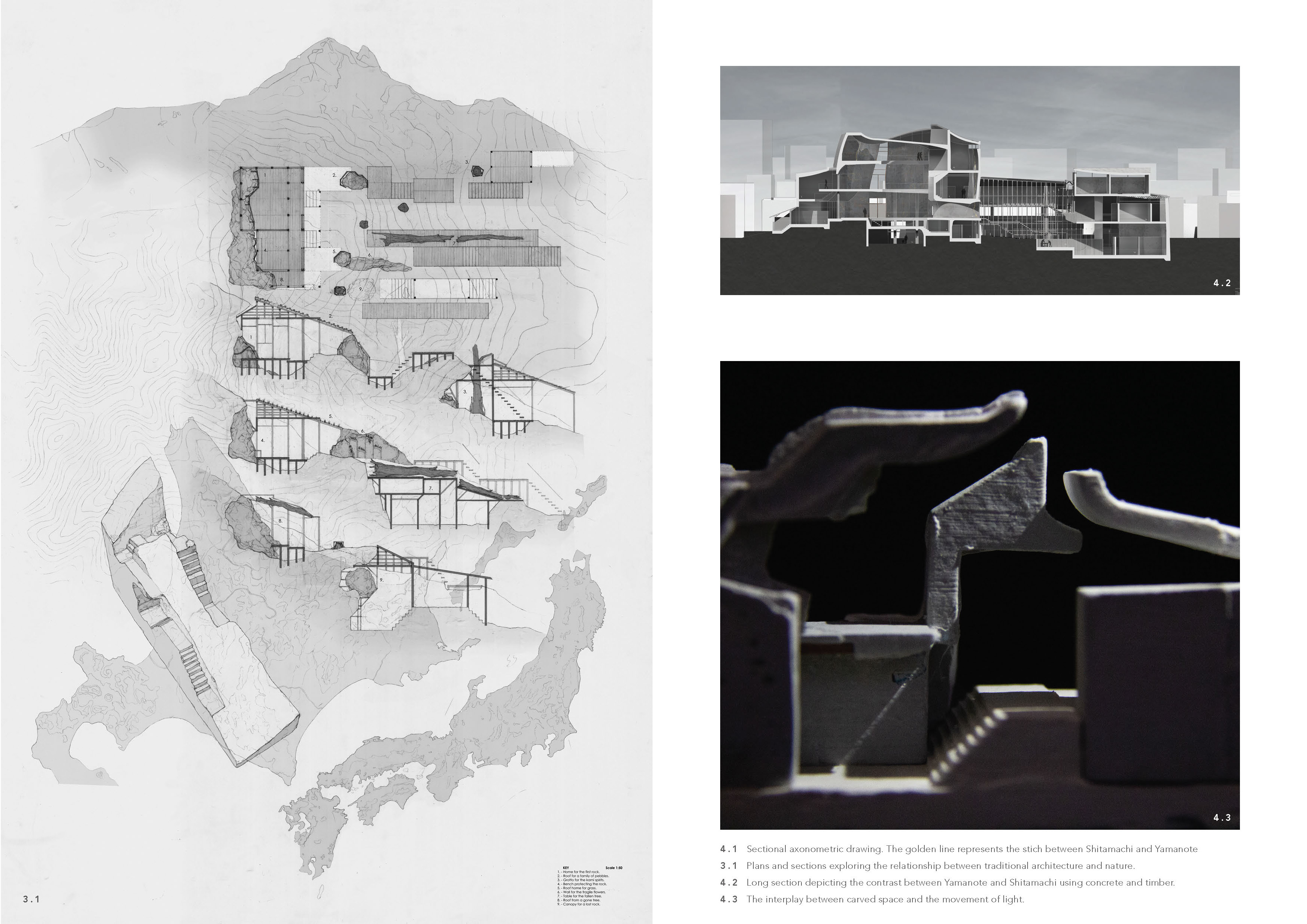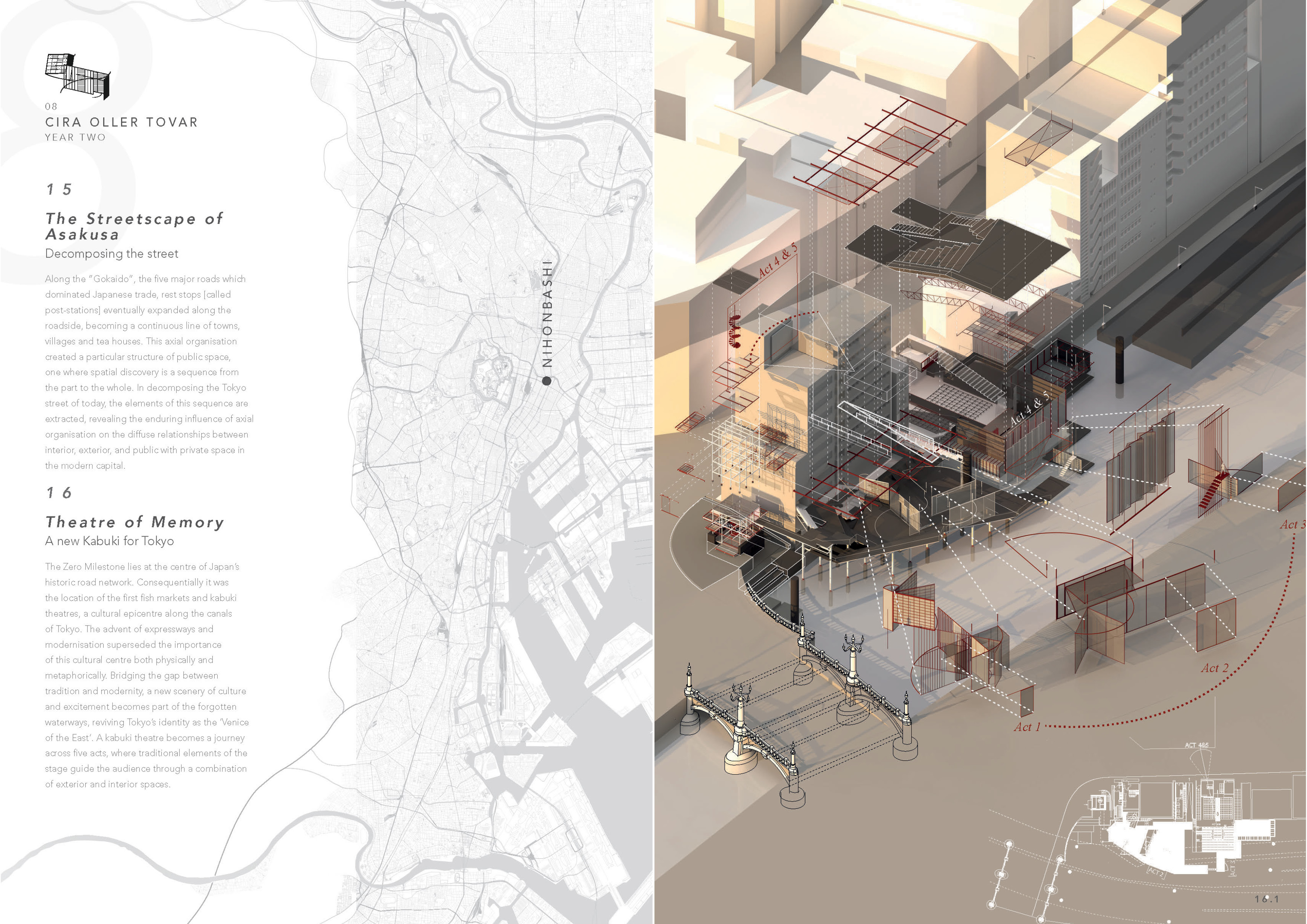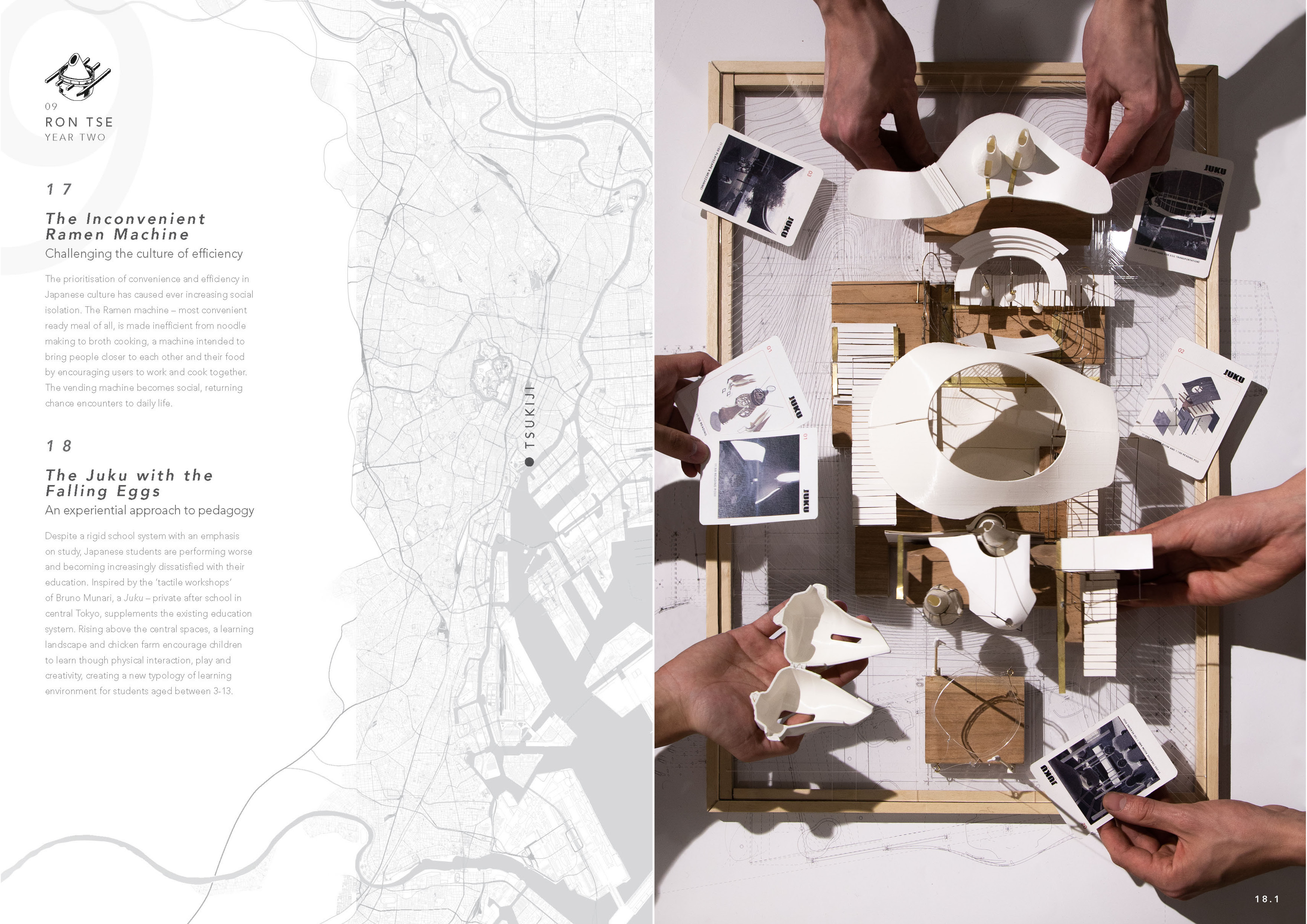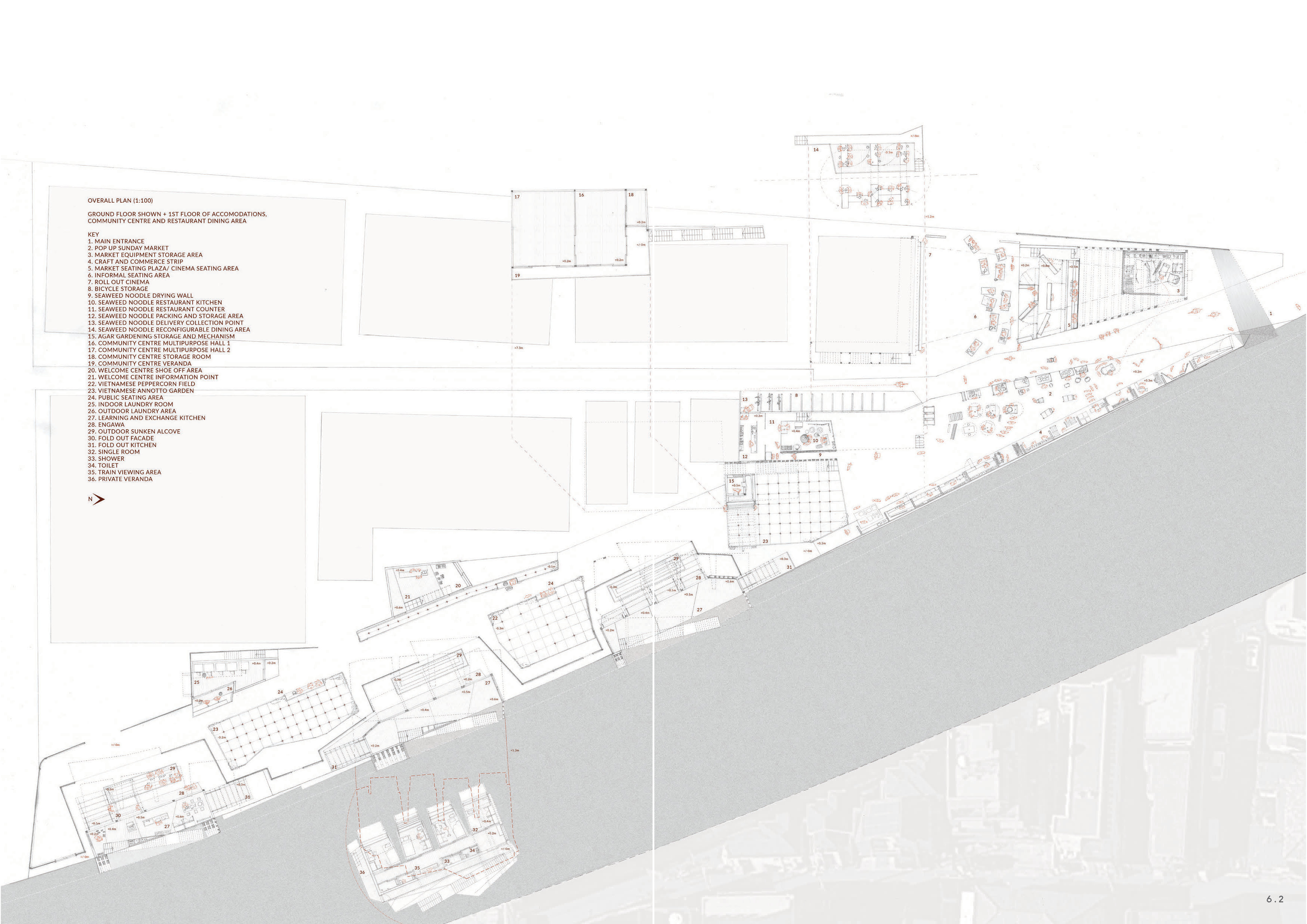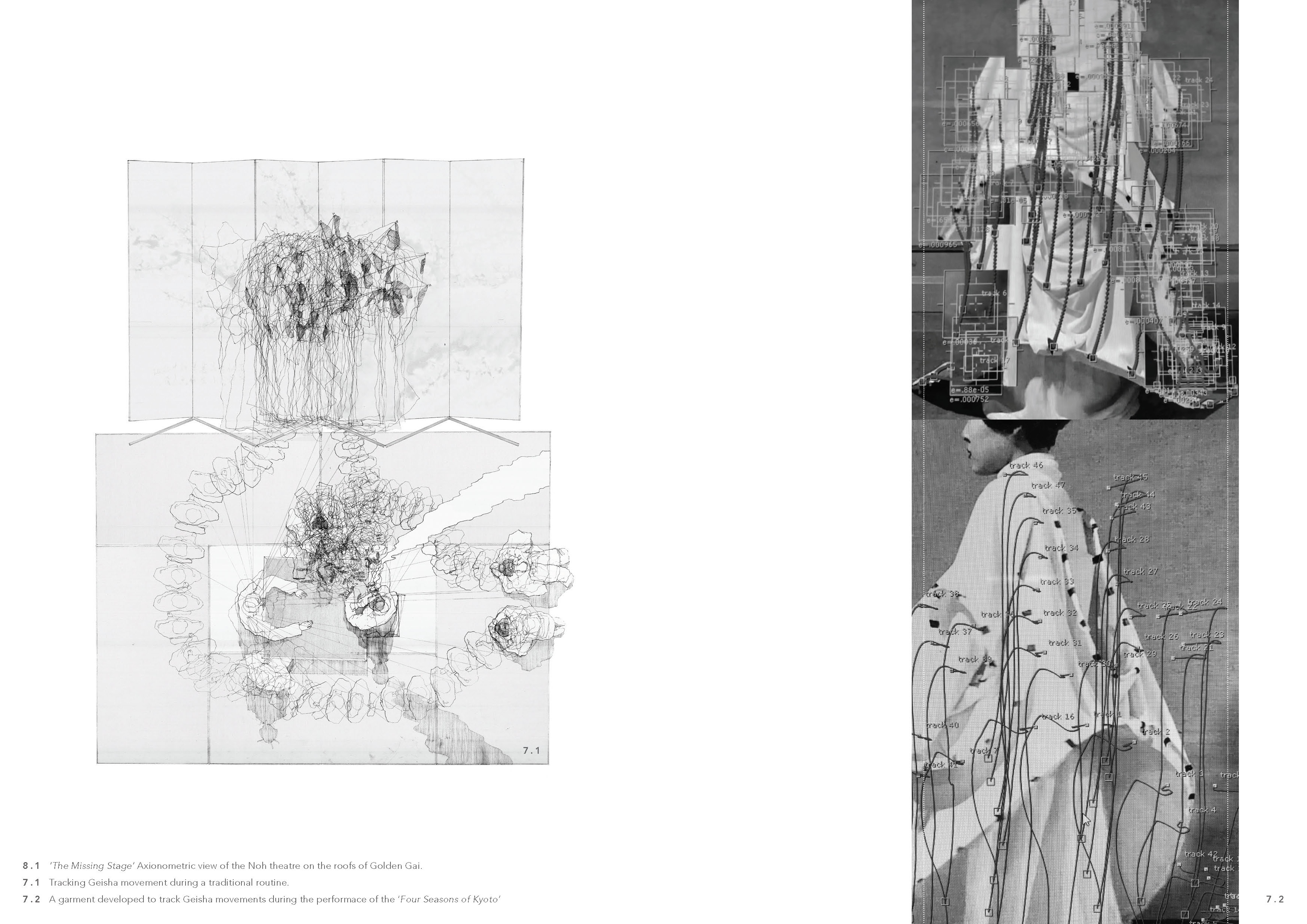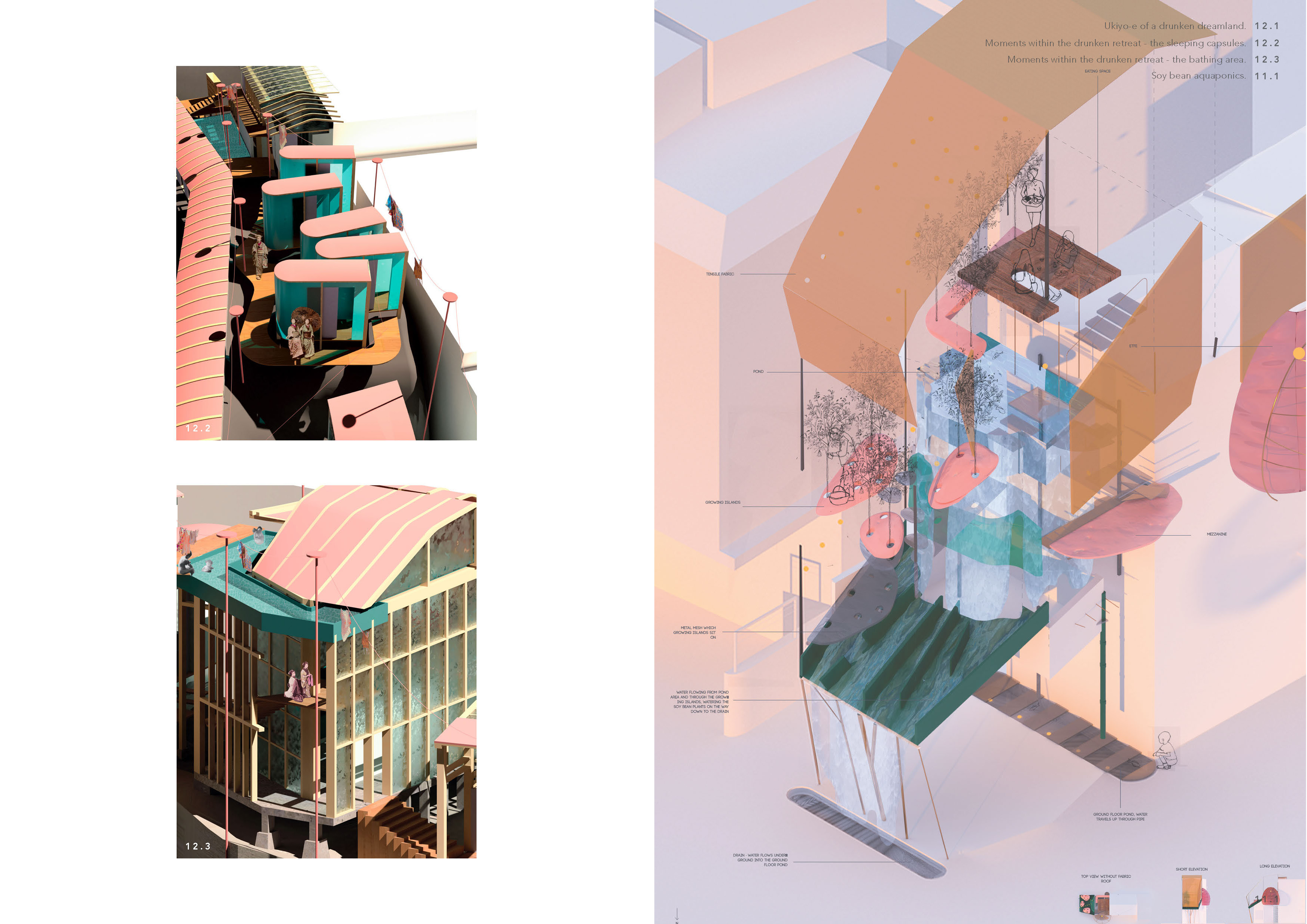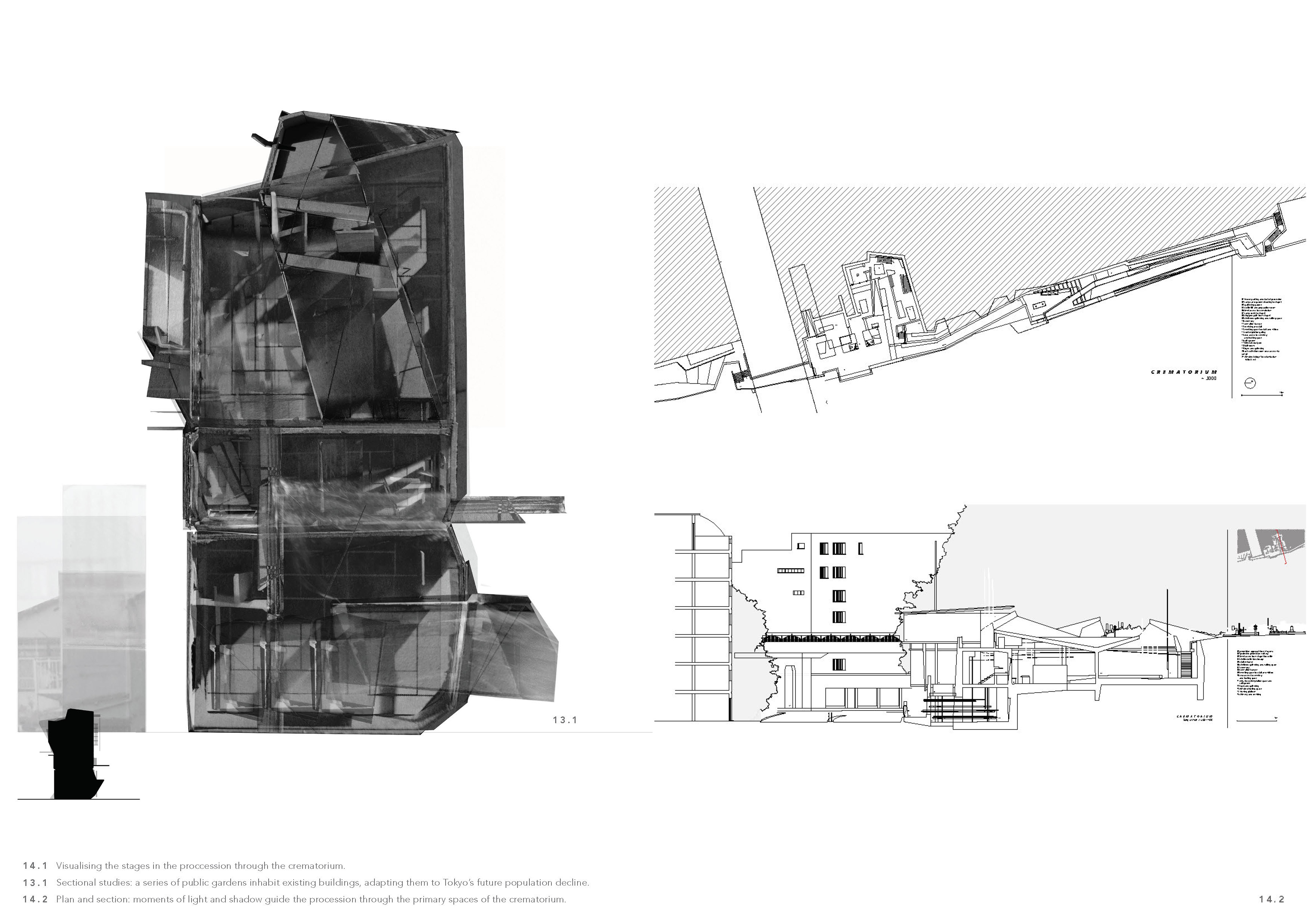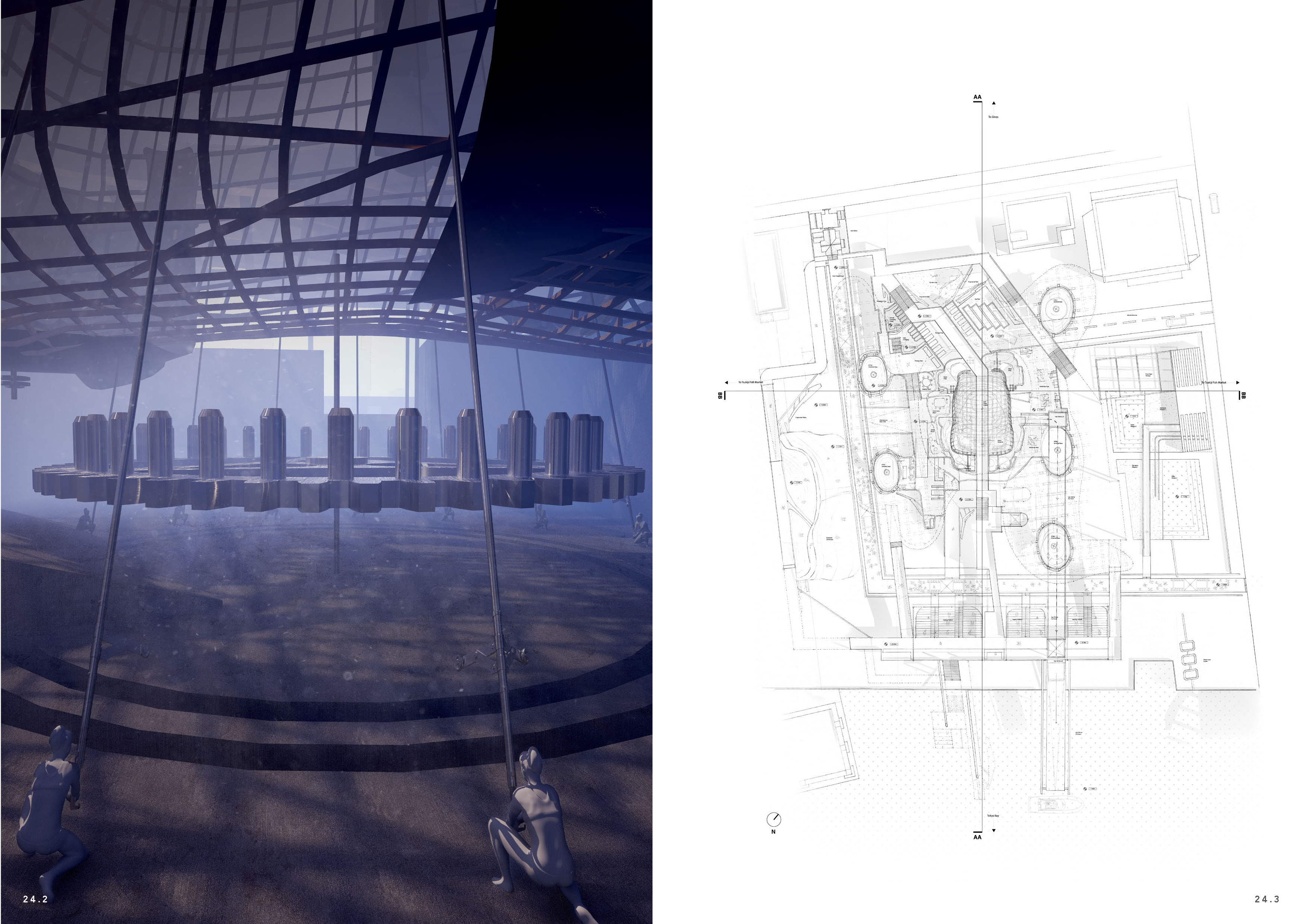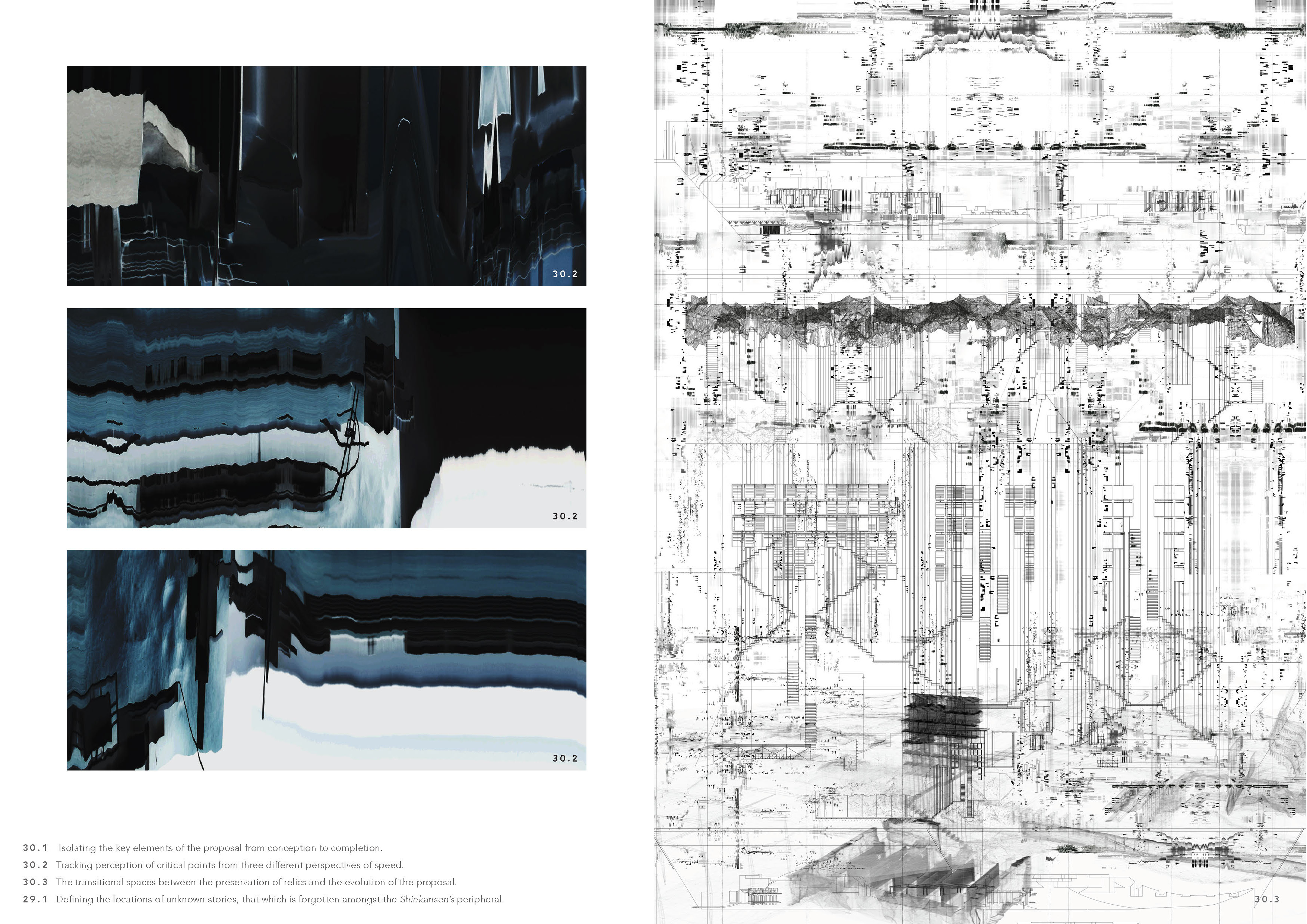
Tilt Shift: Long Views Across the Edo
Bartlett 2018 - 2019
Vestiges of old “Japan-ness” can be found beneath the superficial neon surface: a dialogue between tradition and modernity that is embodied in the engawa, a narrow Japanese veranda that forms an ambiguous passageway between dwelling and garden. Caught between translucent shoji screens and the outer storm shutters, this space exists as a blurred threshold – a space that is neither inside nor out, a platform for conversation or observation of the slow passing of the seasons. This space reflects Japan’s traditional reverence for natural life and the environment. Originally absent from the Japanese language, “nature” was considered so integrated with the everyday experience that there was no impetus to conceptualise it as its own entity.
Despite the culture’s strong roots in nature, Japan at the turn of last century opened to the West with catastrophic consequences: turning its back on much of its past, it swiftly assumed the idea that nature was something to be controlled. Later, in the 1960s, protagonists of the Metabolist movement designed a wide-scale transition from the rural to the urban, making way for the Japan of today, where riverbanks, beach fronts and mountain slopes are liberally paved in concrete.
The paradox between Eastern and Western approaches typifies the tensions between nature and culture: both in constant motion, slowly tilting between extremes, forcing us to speculate on how our environment might recalibrate when one radically shifts.
Tutors: Paolo Zaide and Farlie Reynolds
Student Work:




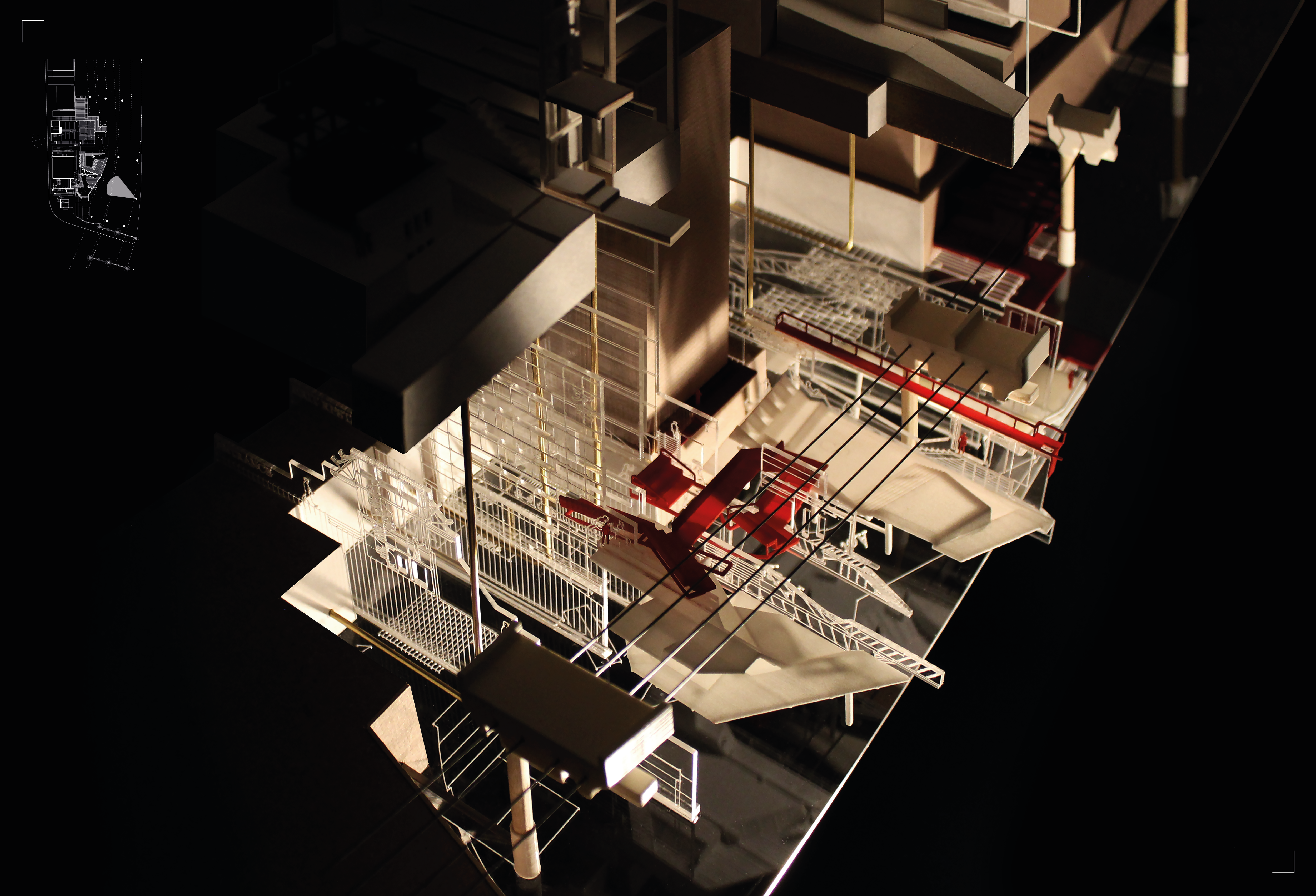









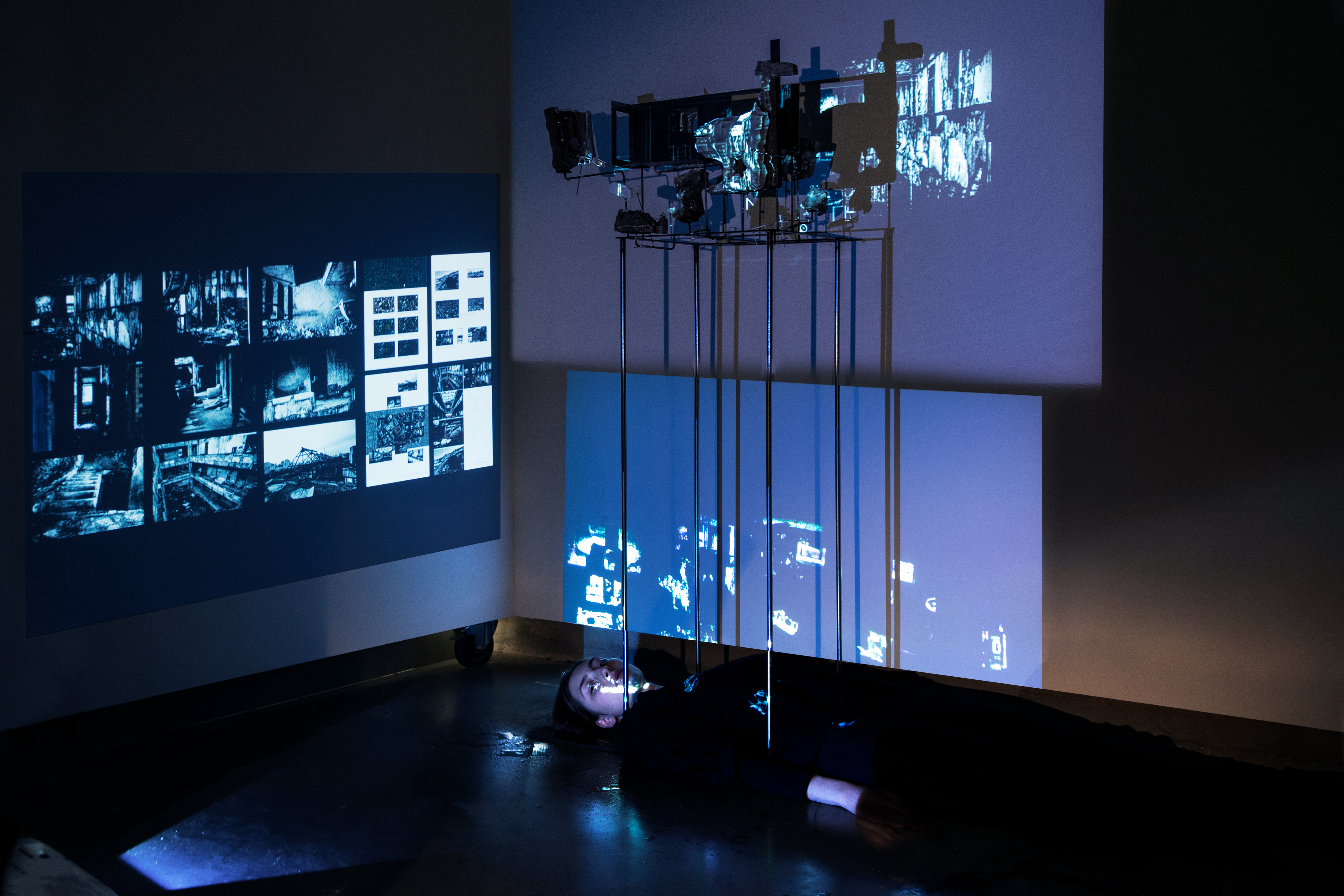

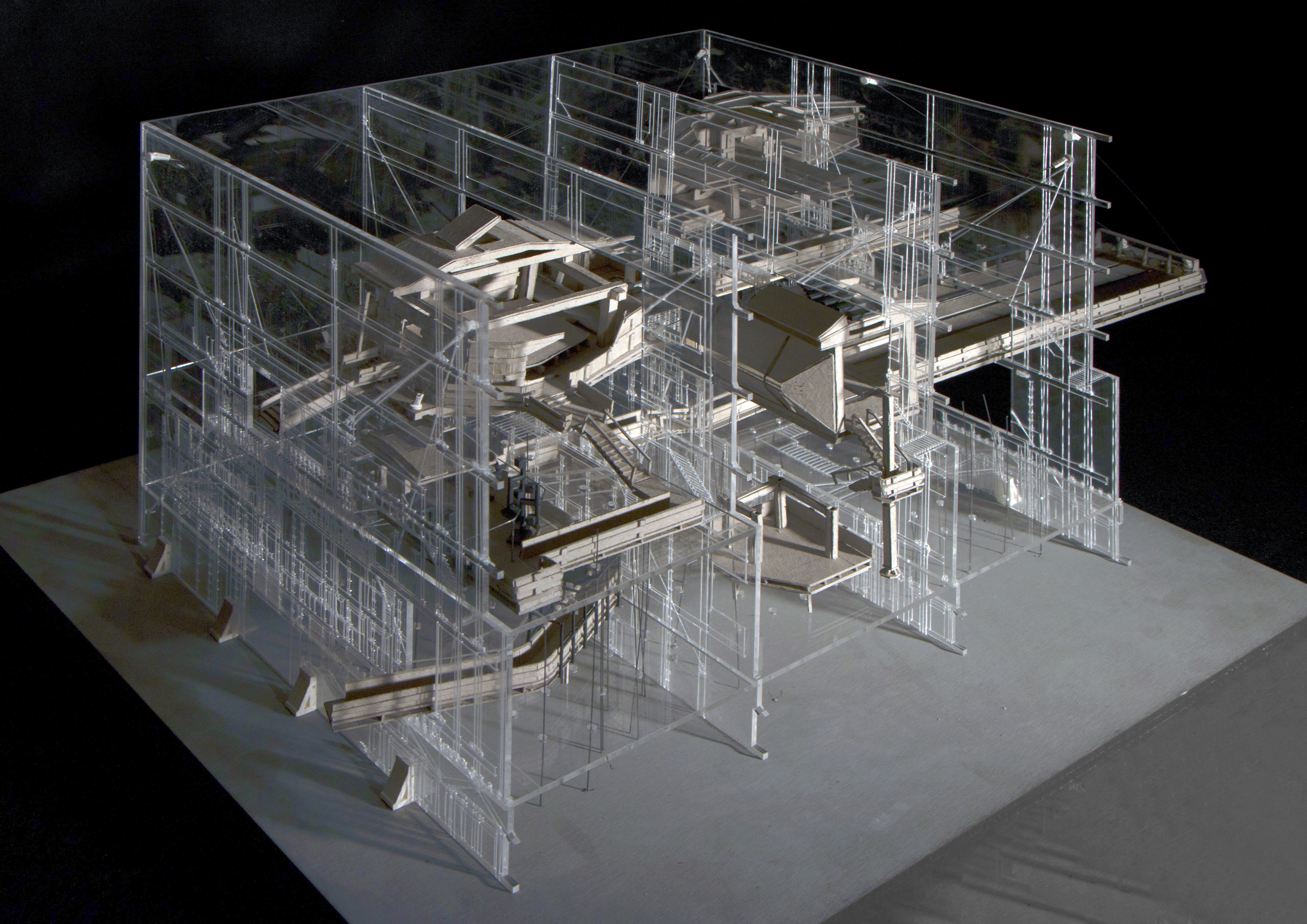





End of Year Show:






















